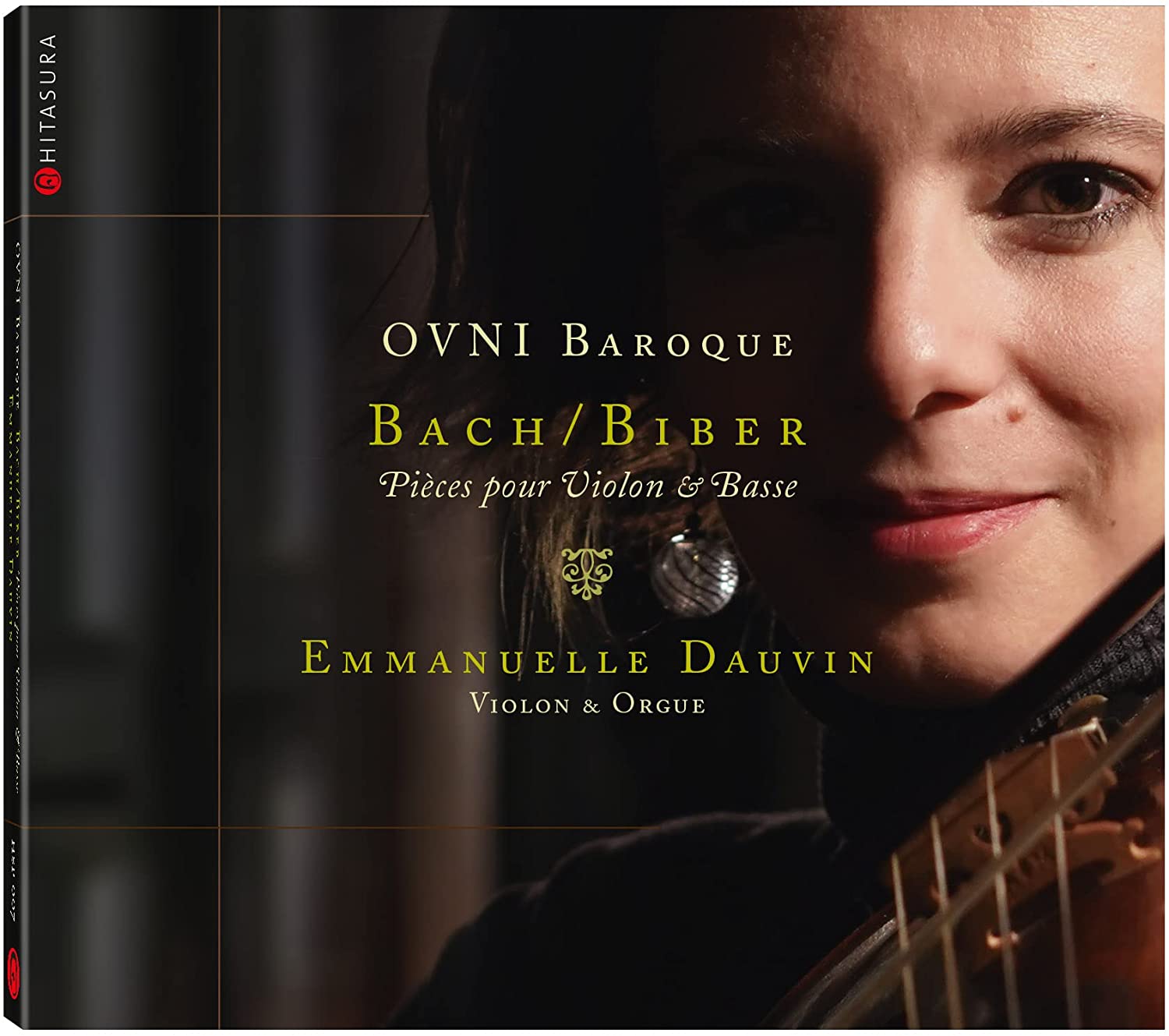OVNI Baroque
Emmanuelle Dauvin violin & organ
60:45
Hitsura HSP 007
Click HERE to buy this on amazon.co.uk
[These sponsored links help the site remain alive and FREE!]
This unusual CD explores the real and implied harmonic resonances in selected works by Biber and Bach. The performer is the French violinist Emmanuelle Dauvin, who while exploring the Bach works for solo violin found herself fascinated by the polyphonic implications and was led back to Biber’s sonatas and their sparse bass lines. How could she bring out the implied harmonic structure line in Biber’s Rosary sonatas with their extravagant and varied tuning? OVNI Baroque is short for “Orgue & Violon Nouvelle Interprétation”, and this takes its inspiration from her hero, Nicholas Bruhns, who was said to have played the organ and violin simultaneously.
How is that possible? Her answer is to use her feet, as Bruhns is said to have done. And so, beginning with the pedal points held in Biber’s Annunciation Sonata, she began playing some simple pedal passages as she played the violin. In addition to the Partita BWV 1002, she includes one piece of Bach, BWV 1023, the ‘Sonata a Violino solo col Basso’, where she plays the slow moving bass line on the organ, leaving its implied harmonies to be suggested by the rich harmonic overtones of the Montre 8’ – or is it the Pédale 8’ Basse? – and the church’s acoustics combined, and I had half been expecting her to add some of the implied bass line in the Partita prima a violin solo senza Basso (BWV 1002) which she divides into two, but she plays it straight, and is clearly committed to HIP.
She plays an instrument by Fabien Peyruk after Amati (2015), but switches for the Nativité sonata to a violin by André Mehler after Stainer (2010). The organ in the church at Guignicourt (Aisne) was built by Jean Daldosso in 2003, and is in the north transept whose details you can see on this website:
https://www.villeneuve-sur-aisne.fr/decouvrir-guignicourt/lorgue-jean-daldosso
And the playing? I found the recorded sound in the church harmonically rich and curiously satisfying. The clear and firm basso feels quite sufficient in the Biber sonatas, and I applaud her attention to the basic resonance of the church. It is an interesting take, and easy to listen to. The accompanying glossy booklet has a quality feel to it, but manages to say very little about the music and a great deal about Dauvin’s feelings. It is a very French experience, and violinists in particular will be intrigued.
David Stancliffe
